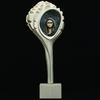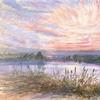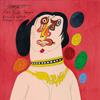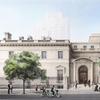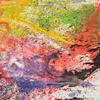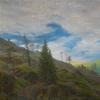PAFA Showcases Seminal Flag Painting by Celebrated Artist Jasper Johns
- PHILADELPHIA, Pennsylvania
- /
- June 12, 2010

This summer, the Pennsylvania Academy of the Fine Arts (PAFA) will feature JASPER JOHNS: FLAG, one of Johns’ most sensuously painted flags in a single-object exhibition, on view June 26 through September 12.
An icon of modern art, Johns’ Flag (1960-66) has been exhibited only once before, and was recently sold at auction for a record price as part of the collection of the late Michael Crichton.
Author, director, producer, screenwriter, and collector, Crichton made his fortune creating television series such as "ER" and movie blockbuster "Jurassic Park." He purchased the painting from the artist in 1973, and the present owners have generously allowed PAFA to give the painting its national debut.
“Jasper Johns is widely acknowledged as one of the most influential artists of the postwar era and one of the greatest living American painters,” remarked David R. Brigham, PAFA’s President and CEO. “We are proud to premiere Johns’ Flag, a work from a series that provides enormous insight into Johns' philosophy of painting and had a great impact on his generation.” In 1954, after dreaming that he painted a flag of the United States of America, Jasper Johns began the first of a series of paintings, collages, drawings, prints, and sculptures depicting the 48-star American flag.
Johns’ image, made in a wide range of materials, sizes, and configurations, has become an icon of American and Modern art. It helped facilitate his breakthrough as a star in the art world after his solo debut at the Castelli Gallery in January 1958.
“Johns’ flags, targets, maps and other subjects of the late 1950s and early 1960s included images that were complete and readily apprehended, instantly recognizable and perhaps taken for granted in our daily lives,” notes Robert Cozzolino, PAFA’s Curator of Modern Art. “Such images helped define the first wave of Pop art for much of the international art world and remain among the most influential paintings of their era.”
When Johns chose the American flag as a subject, he selected an image that could inspire an extraordinary range of emotions, personal associations, and historical memory. He told curator Walter Hopps in 1965, he gravitated towards such images because they are “things which are seen and not looked at, not examined, and they both have clearly defined areas which could be measured and transferred to canvas.” Flag subverted modernist critics’ emphasis on flatness and self-referentiality as the highest achievements of modern painting. Johns’ painting depicts a flat object presented as an object complete with painted edges. Its physical edges are the image’s edges. This has led some art historians to muse whether Johns’ flags are paintings or actual flags – can a representation become the thing it represents?
While many of the issues posed by Johns’ work were unique to his time, the capacity for realist painting to cross over into reality had been tested by American trompe l’oeil painters in the late 19th century such as John Frederick Peto and William Harnett, artists with ties to Philadelphia and PAFA. These artists attempted to make painted still-lifes that so closely resembled the objects they depicted that the resulting image would “fool” viewers into thinking that they were seeing real objects rather than painted illusions.
Johns’ innovation was focusing on a subject that could be simultaneously object, symbol, realist representation, and was found, not designed by the artist. In his words, the subject was “preformed, conventional, depersonalized, factual, [including] exterior elements.” In Flag the “flag” is not situated in illusionistic space but is the tangible, self-contained entire hand-made object.
As Johns told critic David Sylvester in 1965, “I’m interested in things which suggest the world rather than suggest the personality. I’m interested in things which suggest things which are,rather than in judgments. The most conventional thing, the most ordinary thing – it seems to me that those things can be dealt with without having to judge them; they seem to me to exist as clear facts, not involving aesthetic hierarchy.” Johns commented that the discrete and given flag did away with any need for him to design the composition or invent a subject, leaving him free to address other things in painting. Indeed, the painting’s texture-rich surface comes from Johns’ careful layering of collaged paper and encaustic, an ancient painting technique consisting of pigment and melted wax. From a distance, this surface gives a sense of a relaxed and weathered fabric. At close range the surface is a polyphonic array of arrested drips, short deliberate strokes, mottled patches of color, and semi-transparent brushwork.
JASPER JOHNS: FLAG will be accompanied by a series of public talks and interactive programs, focusing on the numerous ways Johns’ painting continues to influence artists, has changed the way we view our flag, and the myriad meanings the image has for viewers. PAFA’s presentation, an exhibition of ideas inspired by, concentrated in, and provoked by Flag will be a unique experience for visitors this summer.
###
Founded in 1805, the Pennsylvania Academy of the Fine Arts (PAFA) is America's first school of fine arts and museum. A recipient of the 2005 National Medal of Arts presented by the President of the United States, PAFA is a recognized leader in fine arts education. Nearly every major American artist has taught, studied, or exhibited at the Academy. The institution's world-class collection of American art continues to grow and provides what only a few other art institutions in the world offer: the rare combination of an outstanding museum and an extraordinary faculty known for its commitment to students and for the stature and quality of its artistic work.
Museum hours are Tuesday through Saturday, 10 a.m. to 5 p.m., and Sunday, 11 a.m. to 5 p.m. The Academy is located at 118-128 N. Broad Street in Philadelphia. Admission to the Permanent Collection is Adults $10, Seniors (60+) & Students with I.D. $8, Youth ages 13-18, $8. Admission to Special Exhibitions (includes Permanent Collection) is Adults $15, Seniors (60+) & Students with I.D. $12, Youth Ages 13-18, $12. Admission is free for members and children under age of 12. Admission to Morris Gallery exhibitions is free.



